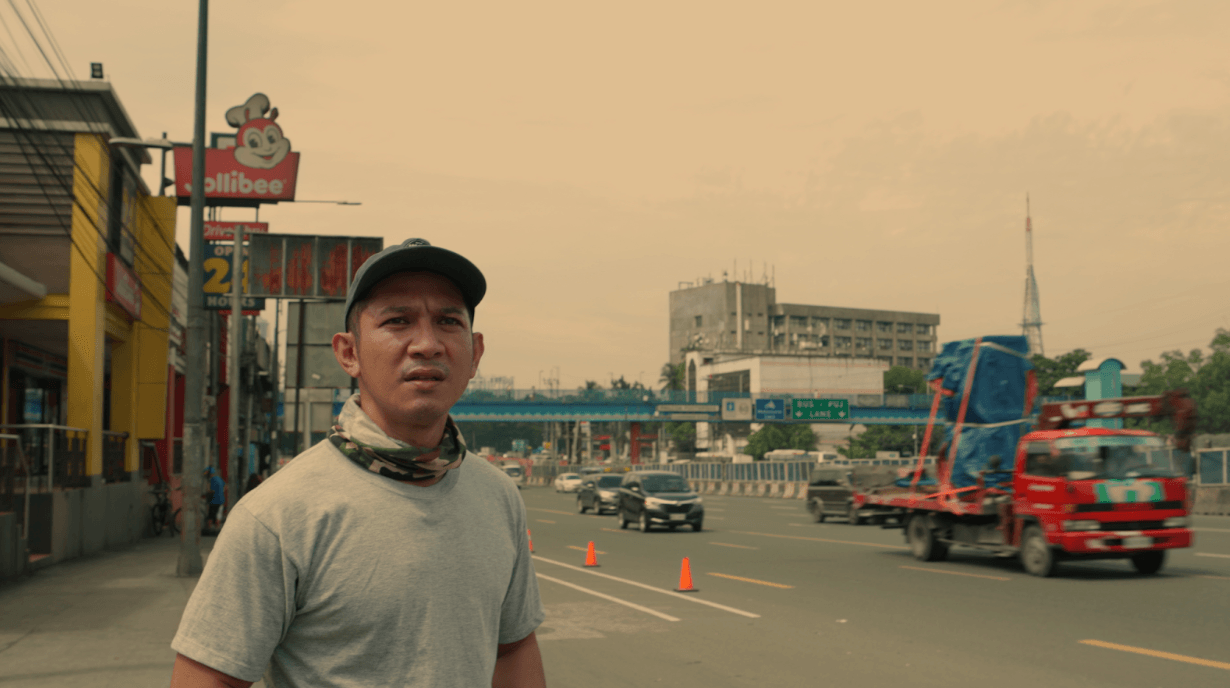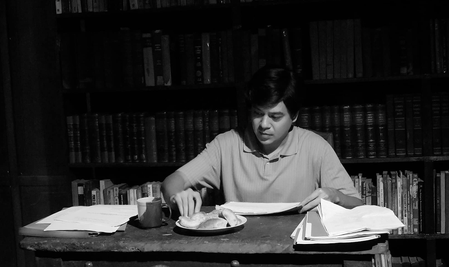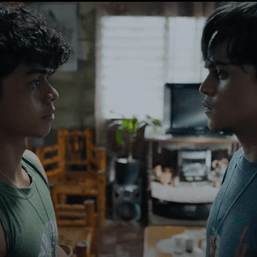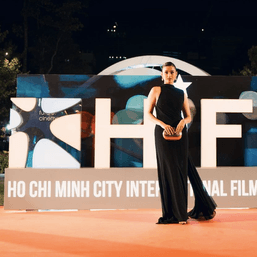SUMMARY
This is AI generated summarization, which may have errors. For context, always refer to the full article.

Going to the theater at the young age of five with his dad became formative for Daniel Palacio, for it was when he had shaped his love for moving images.
“He would explain things as we watched, whispering to my ears, making sure that I’m following the story. From there, my fascination for movies grew, and my storytelling skills developed as I illustrated stories on paper,” said the director.
Without formal film education, Palacio had to resort to books and online videos to learn more about cinema on his own. That is, until his big break came, after meeting Brillante Mendoza and Armando Lao, who provided him the opportunity to further hone his craft.
Over the years, Palacio churned out a number of films. Pailalim, which tells the story of a gravedigger cooped up in a cemetery mausoleum, screened at the 2017 San Sebastián International Film Festival and 2018 Istanbul International Film Festival, and went on to win best picture and best director, among other recognitions, at the 2019 Sinag Maynila Independent Film Festival. His film The Brokers also competed under the Asian Future section of the 34th Tokyo International Film Festival.
Palacio’s latest work Ang Matsing at ang Pagong debuted at the 20th Asian Film Festival, held at Cinema Farnese in Rome, Italy. The film is about a local leader who decides to run for the mayoral race against a political dynasty in a town in Quezon. James Blanco, who plays the lead role, won best actor at the festival.
The film, according to Palacio, is set to compete at other international film festivals before eventually screening in local cinemas. “The most important people [who need] to see it, as the film is made for them, are the Filipinos,” said the director.
In this interview, Palacio talks about how he brought a popular Philippine fable to the screen, his experience in Rome, and shooting in Catanauan, Quezon.

‘Ang Matsing at ang Pagong’ premiered at the main competition category of the 20th Asian Film Festival. How did it feel to see your film on the big screen?
I had the privilege to show my other movies in different international film festivals before. Despite these, it still remains a humbling experience for me, especially when fellow Filipinos attend the showing and I see their pride while watching it.
The film is based on a Philippine fable popularized by Jose Rizal, and you’ve reworked it into a political drama. Why do you think it’s important to retell such a familiar story in the Philippines?
The fable was written in 1889, with Dr. Rizal hoping that Filipinos would somehow escape the grasps of foreign oppressors and bring our own identity back. More than a century later, [the oppression] is still happening in our country, but ironically, the oppressors are now fellow Filipinos in power. Filipinos have their own identity, a beautiful and important one. As a filmmaker, it is my duty to show it in our cinema. We owe it to our heroes and ancestors who died fighting for [this identity].
I’ve learned that the film has no script, and scenes largely bank on situational direction and actor improvisation. I’m curious about how you made it work during the shoot.
Doing scenes without a script makes spontaneous, more realistic interactions and emotions, especially in terms of dialogue. As a realist filmmaker, it works best in simulating real life, where you don’t wait for lines before you throw yours. You react instinctively and circumstantially. With this, even amateur actors can keep up with the professionals.
James Blanco won best actor for his work in the film. How was it working with him, and was he already your choice for the lead role when you were working on the material?
A real professional actor. James quickly adapted to my directing techniques. He dove right into the role of the Vice Mayor and convincingly played it. Given the freedom to do ad libs, it was a beauty to watch him and the rest of the cast play their characters. Giving them your trust with fewer limitations would not only make the film believable, but would also enhance their individual crafts.

While watching the film, I noticed that there was a sudden shift in narrative focus, particularly when it delved deeper into the character of Alvin (played by Ryan Sandoval) — someone who is caught in the story’s dirty play of politics. What made you want to explore his perspective?
As one of the turtles, Ryan’s perspective is very critical. It highlighted how the people in power manipulate the weak, how they can easily affect lives and people’s mindsets with their personal ambitions and their will to remain on top. Ryan is a character whom everyone can relate to.
You shot a huge part of ‘Ang Matsing at ang Pagong’ in Catanauan, Quezon. How significant was the location scouting to establish the film’s milieu, given that it confronts how political dynasties can also grow, if not flourish, even in provincial landscapes?
We wanted to give the location its own character. We were looking for a place away from the city but rich in history, as we mirrored the Philippines’ political situation in one small provincial town, an innocent town stained by greed and personal gain, just like how the Philippines changed from Asia’s best to one of the world’s most corrupt countries.
Most of the shots in the film are tracking shots. If not that, you have the camera often staying on the characters’ faces. Why employ these particular shots?
Tracking and tight shots go deep into the characters’ thoughts – their fears, hopes, and guilt. I chose this to bring the audience closer to knowing how the subjects react, feel, and think in time of survival and confusion. Would they do this if they were in the same situation? Or could they even put their place in there as a powerless human being without a choice? Maybe that’s more difficult to do.

The film also tackles press freedom issues in the country. Can you tell me why the story of Tatay Rudy (played by Lou Veloso), a community radio anchor, is crucial to the film’s messaging?
Protection of the press is troubling in our country. The media can no longer enjoy freedom as before. Tatay Rudy’s truth is a dagger to the oppressors, and the oppressors retaliate quickly to withhold the truth. The radio man is us speaking the truth.
‘Ang Matsing at ang Pagong’ is the debut project of M1 Films, but you’ve already produced films like ‘Pailalim’ (2017), ‘The Brokers’ (2020) and ‘Kaliwaan’ (2022). How is this film different from your previous projects?
It is hard to find producers going all-in on your vision, and I’m fortunate M1 Films gave me the freedom to choose a story important to me. This is a more direct political take without wandering away from giving the voiceless their platform to be heard. In this film, along with my mentor, Armando Lao, we made sure that our culture is accentuated from start to end. We stayed true to it, that even the film’s music originated from Catanauan, the Abaruray song.
I wonder if there were any films that helped you develop your vision for ‘Ang Matsing at ang Pagong’?
I get my vision most of the time from research and interviews when looking for a story. I do leg work and personal visits to people who share their perspectives on a subject. It’s their emotions and way of telling them that influence and shape a story for me, with the challenge of how to translate it on film.
What’s your most memorable moment on set?
There was a scene where James Blanco as the Vice Mayor was poised to accept a bribe from the Mayor to not run against her. James, given the freedom to react on his own and without a script, rejected the bribe as he was locked into his role as a just and honest politician. I had to explain that it was a part of his storyline. It was a compelling scenario and I loved it. – Rappler.com
Add a comment
How does this make you feel?






There are no comments yet. Add your comment to start the conversation.